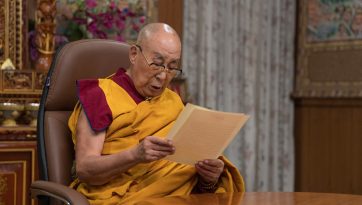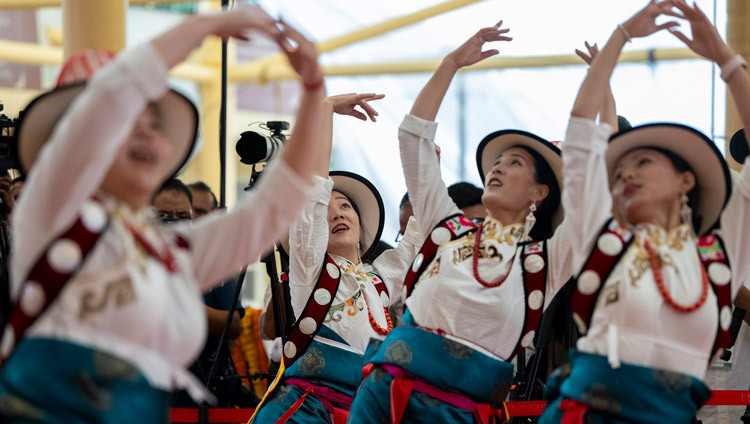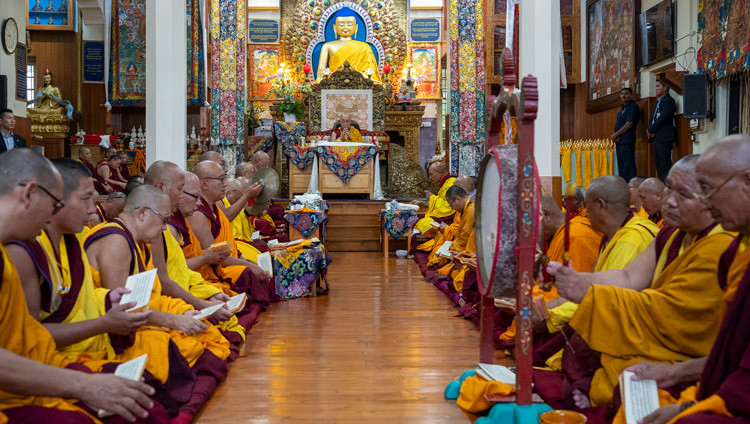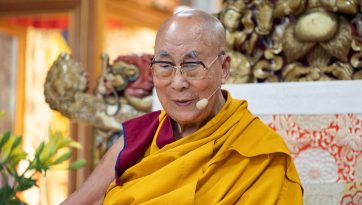As China Readies for Transition, 7 Tibetan Self-Immolations in 7 Days
By Hannah Beech, TIME, 29 October 2012
Tibetan exiles mourning the death of Sangay Gyatso, who set himself on fire in Tibet’s Amdo region, stage a protest in McLeod Ganj, near Dharamsala, India, on Oct. 6, 2012
Last week, seven Tibetans set themselves on fire in as many days, bringing the total of self-immolations on the troubled high plateau to more than 60 people since March 2011, according to Tibetan exile groups. Most of the protesters have been young Buddhist monks or former clerics, who called for the return of Tibet’s exiled spiritual leader, the Dalai Lama, as flames besieged their bodies. But an increasing number are regular villagers — farmers, herdsmen and students, among others — motivated by their despair over China’s repressive rule over Tibetan regions. The seven who burned themselves from Oct. 20 to 25, for instance, all appear to be laypeople, including a pair of 20-something cousins, a young father and a 58-year-old farmer who set himself on fire in front of the Public Security Bureau in the Tibetan holy town of Labrang (or Xiahe in Mandarin) in the Chinese province of Gansu. Six of the seven protestors are believed to have died. All areas where this month’s fiery protests have occurred are reported to be under security lockdown, with Internet and phone lines often severed.
The seven self-immolations in a week rank as the deadliest spate of such protests since the extreme actions began piling up two years ago. (There was one self-immolation recorded in Feb. 2009, but all others have occurred since March 2011.) The Chinese government blames the Dalai Lama, who escaped Tibet after a foiled uprising in 1959, for orchestrating the self-immolations. “In order to achieve their separatist goal, the Dalai clique has showed no hesitation in inciting self-immolations,” said Foreign Ministry spokesman Hong Lei last Wednesday. “This is despicable and deserves people’s condemnation.” In Gansu’s Gannan prefecture (or Kanlho in Tibetan), where the famous Labrang monastery is located, local authorities offered more than $30,000 in reward money for information on those who planned self-immolations there.
But the Dalai Lama and the Tibetan government in exile, which is based in the Indian hill town of Dharamsala, say these are individual protests with no coordination from abroad. “The Central Tibetan Administration has consistently appealed to Tibetans to not to resort to drastic actions such as self-immolation,” said a statement from the Tibetan government in exile. “Current Chinese efforts to offer financial incentives fail to constructively address the causes behind the self-immolations. This reflects the authorities’ lack of understanding of the situation in Tibet.” Last Wednesday, the Tibetan parliament in exile released its own statement, blaming the self-immolations on the Chinese government’s destruction of Tibetan culture and describing the self-immolations as the Tibetans’ “highest form of nonviolent protest against the Chinese government’s systematic repression of their freedom of religion and human rights.”
The self-immolations have been all but ignored in the state-controlled Chinese press. China’s social-media sites, which face censorship but can still provide a useful gauge of the topics that interest China’s wired population, have been more preoccupied by China’s once-a-decade leadership transition, which is set to take place next month. China’s new leaders, including heir apparent Xi Jinping, must tackle a variety of pressing issues, from slowing economic growth to burgeoning corruption and disparate protests by dissatisfied citizens. Rarely listed among the government’s biggest challenges is the country’s ethnic situation, which encompasses grievances from Tibetans, Muslim Uighurs in China’s northwestern Xinjiang region and Mongolians in the north of the country. After all, there are enough pressing issues among China’s Han majority to keep the new rulers plenty busy.
Yet a few Chinese scholars are highlighting the need to mend the country’s frayed ethnic fabric. Can China continue to deal with ethnic dissatisfaction by pouring in soldiers and frightening locals into quietude? Could there be any merit in complaints from ethnic minorities that their cultures are being deluged by Han chauvinism? “The biggest issue facing China is not corruption but the nationalities [or ethnic minority] policy and religious policy,” says Zhang Yihe, a well-connected writer in Beijing, whose books are banned in China. “I think for Tibet and Xinjiang, we should let them decide whether they want to be part of China. But a lot of intellectuals disagree with me.”
In 2008, deadly ethnic riots broke out in Tibet, triggering a massive security crackdown that lingers today. A year later, the same happened in Xinjiang. Less widespread protests have occurred in Inner Mongolia, where the population balance has tipped from once being considerably Mongolian to now turning principally Han. (In one notorious case, Hada, a Mongolian activist who was sentenced to 15 years in jail for espionage and separatism and released in late 2010, has been under illegal secret detention ever since, according to watchdog Human Rights in China.) In these vast ethnic borderlands, the Chinese government contends that the Communist Party has helped raise the standard of living for grateful locals. The wife of China’s heir apparent Xi is Peng Liyuan, a famous folk singer with the People’s Liberation Army whose specialty is rousing propaganda anthems. One of the ditties she warbled five years ago on Chinese television featured Tibetans thanking the Chinese military for liberating them — and, rather less dramatically, for helping them wash their clothes.
But some Tibetans, Uighurs and Mongolians believe that Beijing is less intent on helping them and more focused on erasing their culture and aspirations for autonomy or even independence. As the self-immolations racked up last week, Xinhua, the Chinese state news agency, reserved most of its Tibet coverage for cheerful stories on government buildings being rebuilt in an earthquake-hit part of the high plateau and four young Tibetans who received donated cornea transplants. On Oct. 26, the official Chinese newswire, Xinhua, ran a story on the world’s highest-altitude national park opening in southwestern Tibet. “The parks are part of Tibetan efforts to turn the region into ‘an important world destination,’ which is also a target of central government,” said the article. One Tibet is on fire. Another aims to become “an important world destination.” The gulf between the Tibetans and the Chinese government begins right there.




